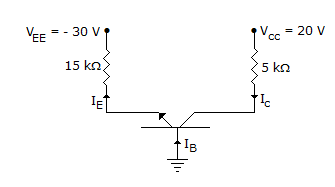Electronics and Communication Engineering - Analog Electronics
Exercise : Analog Electronics - Section 20
- Analog Electronics - Section 11
- Analog Electronics - Section 21
- Analog Electronics - Section 20
- Analog Electronics - Section 19
- Analog Electronics - Section 18
- Analog Electronics - Section 17
- Analog Electronics - Section 16
- Analog Electronics - Section 15
- Analog Electronics - Section 14
- Analog Electronics - Section 13
- Analog Electronics - Section 12
- Analog Electronics - Section 1
- Analog Electronics - Section 10
- Analog Electronics - Section 9
- Analog Electronics - Section 8
- Analog Electronics - Section 7
- Analog Electronics - Section 6
- Analog Electronics - Section 5
- Analog Electronics - Section 4
- Analog Electronics - Section 3
- Analog Electronics - Section 2
46.
In a CE amplifier the Q point is very close to saturation point on the dc load line. This results in
47.
Class-B amplifier has less efficiency compared to
48.
In the amplifier circuit figure the quiescent point voltage and current are


49.
Calculate the O/P voltage of a non-inverting constant gain multiplier with R1 = 100 kΩ, Rf= 600 kΩ, V1 = 2 volt, then O/P voltage Vo of non inverting op-amp is given by
50.
For a BJT, β and a are related as
Quick links
Quantitative Aptitude
Verbal (English)
Reasoning
Programming
Interview
Placement Papers



